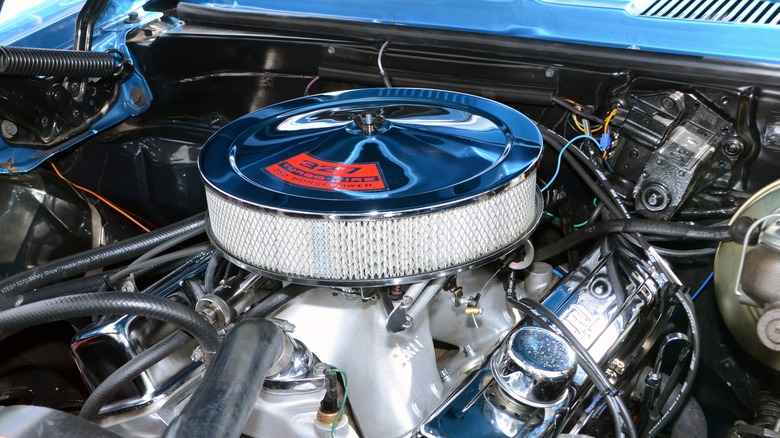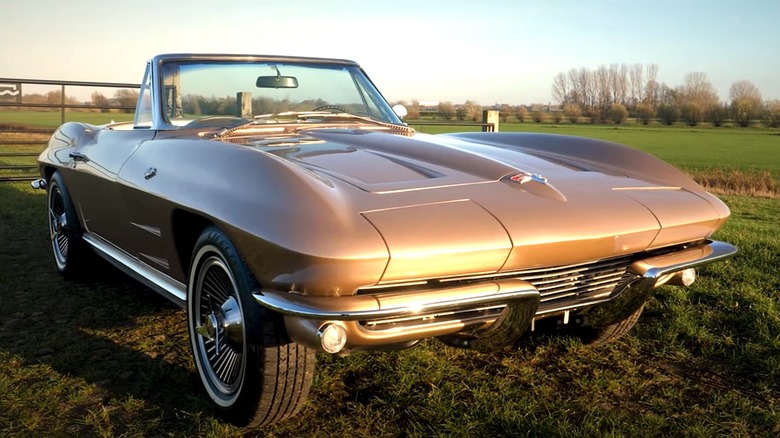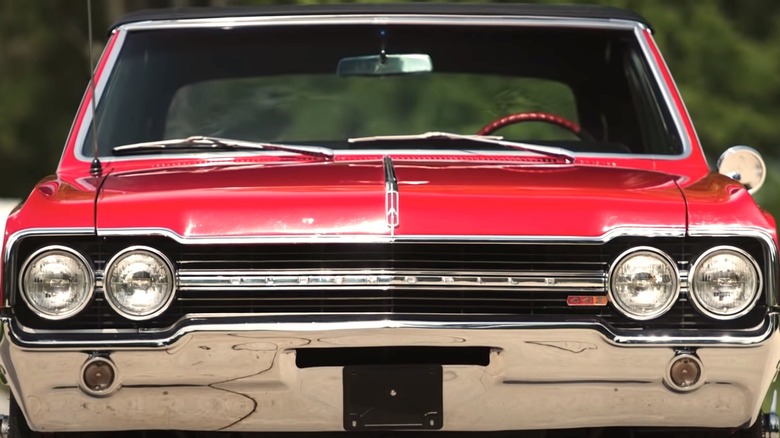The Best And Worst Years For The Chevy 327 Engine
When the gearheads of the world get together to talk about the most powerful vehicles from the early muscle car era, those sporting the more notable big block engines of the day tend to take up most of the chatter. But one small block beauty from the pony car set is just as often mentioned in those conversations, with Chevrolet's legendary 327 V8 engine proving a worthy counterpart to the big-block beasts.
Affectionately nicknamed "The Mighty Mouse" by some on the hot rod circuit, Chevy unleashed the 327 on the speed-seeking masses in 1962, outfitting most of its vehicles with the engine in that model year with either a 250-hp build, or a more powerful version that pushed the ponies up to 300. Yes, Chevy's Corvette came outfitted with the 327 starting in '62 as well, though the iconic sports car also offered souped-up four-barrel and fuel-injected variants that touched 340 hp and 360 hp respectively.
While the Corvette became the poster child for the muscle Chevrolet's 327 was capable of producing, even consumers who opted for less sexy vehicles like the Bel Air and the Impala could appreciate its power. So popular was the engine that Chevy kept it in production for most of the 1960s, keeping it under the hood of multiple builds all the way through the 1969 model year, though there were a few ups and downs for the engine over that span. These were the best and worst years for Chevy's famed 327 engine.
The Corvette-powering 1964 Chevy 327 was a record breaking hit with drivers
Decades after Chevrolet ended production of the 327, the engine's esteem has grown to the point that diehard fans celebrate its legacy on March 27 of every year. Though Chevrolet outfitted some of its best-loved vehicles with the 327 engine in the 1960s, none were more universally adored than the Corvette. Though not the first sports car produced by a U.S. manufacturer, the Corvette quickly earned the title "America's Sports Car" once it entered the market, and has remained a Chevy favorite over several generations of innovation.
The Corvette already had a reputation as a speedster before Chevy started putting the 327 under the hood. But the horsepower upgrade only bolstered that rep in the '62 and '63 models. It was in 1964, however, when the 327 arguably reached the pinnacle of its power, and a notable upgrade to that small-block V8 engine would eventually help that year's Corvette break an impressive power record.
Said upgrade came in the form of the so-called "30-30 Camshaft," which was developed by Chevy's team of racing engineers and provided a massive horsepower boost to the Corvette, so much so that the L76 build could push up to 365 hp. As for the L84 build of the "30-30" 327, it allowed the Corvette to push a whopping 375 hp, making it the first small-block engine to achieve such power. The L84 variant of the 327 would remain the only small-block engine to produce that kind of power for nearly four decades, with Chevy's 5.7-liter LS6 V8 finally topping the mark in 2001.
1965 models with the 327 couldn't keep pace with a certain legendary Ford
Even as the "30-30 Camshaft" helped Chevy's 327 engine deliver unmatchable horsepower to the Corvette, by the end of 1965, the classic vehicle was no longer the top-selling sports car on the American market. If you're wondering how Corvette fell so quickly from favor among U.S. consumers, '65 was the year Ford officially released the first of several generations of its own iconic sports car, the Mustang. Ford, of course, debuted the vehicle to raves at the 1964 World's Fair, with the Mustang quickly winning over sports car enthusiasts as a powerful, and significantly cheaper alternative to Corvette.
By the end of 1965, the Mustang had destroyed even the most optimistic of Ford's sales projections, with the company moving a reported 681,000 units. Struggling to keep pace even with the record-setting, 327-equipped Corvette in its lineup, Chevy set about tuning up the powerful small block to make it lighter, easier to maintain, and compatible with more of its vehicles.
The result was the L79 variant of the 327 V8, which was also made available for the Chevelle Malibu and Nova. While each vehicle got a significant power upgrade from the L79, the cars' bulky builds and lack of dexterity limited the appeal of such power. Likewise, the engine didn't elevate Corvette much above its already esteemed status quo. Despite delivering impressive power numbers of its own, it felt a lot like Chevy was spinning its wheels with the L79 327 build, thus falling behind the pack at the dawn of the so-called pony car wars with Ford.


